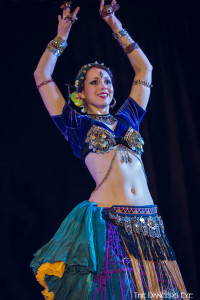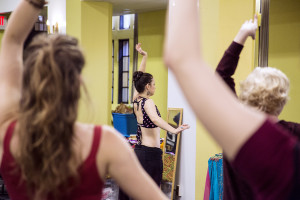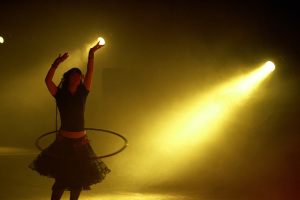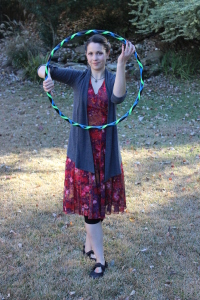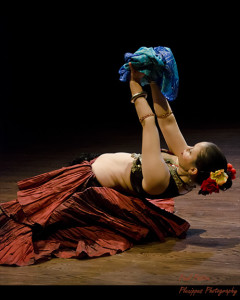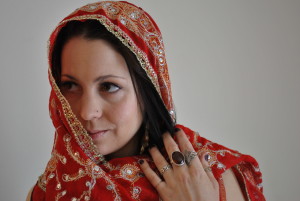
If you look at news headlines or social media, it might seem that trans athletes have come out of nowhere at this year’s Olympic Games to violently pummel women.
Except that’s not what’s happening. At all.
First, I find it a bit odd that people who formerly didn’t give a shit about women and women’s sports are suddenly rallying to this cause. In just the U.S., “men received $252 million more in athletic scholarships than women” and athletes with other aspects of marginalized identities face even larger barriers. According to the Women’s Sports Foundation:
“Girls and women of color, those with disabilities, and LGBTQ+ athletes consistently receive less access to sport than their peers.
- Girls at high schools where the majority of students are Black and/or Hispanic have only 67 percent of the opportunities to play sports that their male peers have, compared to their counterparts at heavily white schools, who have 82 percent of the opportunities that boys do.
- And while women make up 44 percent of all NCAA athletes (compared to 15 percent in 1972), only 14 percent of female NCAA athletes are BIPOC.
- In addition, of the more than 15,000 high school students who participate in adaptive sports, only 44 percent are female.
- In a recent study, 77.6% of LGBTQ students avoided school functions, 71.8% avoided extracurricular activities, and 25.15 avoided school athletic fields or facilities because they felt unsafe or uncomfortable.”
Further, I’ve trained with boxers, and part of the sport involves getting hit. Sometimes in the head. Sometimes quite painfully. So it just shows me that people who know absolutely nothing about boxing are seeing footage of women boxing for their first time ever, and losing their minds about how violent it is. That is…just how the sport is? And there are rules to protect people as much as possible. And none of those rules were violated here.
You also may have noticed that whenever an athlete’s gender is called into question, that athlete is not white. Related to the above paragraph, it seems a lot of white people are conditioned to absolutely freak out when it looks like a white woman is being assaulted by a person of color. Which, yes, nobody should be assaulted! But in a sport where we see women of color getting ahead of their white peers, and suddenly it’s only women of color whose gender identity is being called into question? That speaks of the intersection of racism and sexism.
South African athlete Caster Semenya went through this. As ESPN documents in a history of gender tests in the Olympics, Indian athlete Santhi Soundarajan also went through this, and was disqualified. Both are poor women of color.
So, too, is Imane Khelif, who is certainly not trans (which is illegal in Algeria, among other reasons). This next bit gets a bit convoluted so please bear with me.
The IBA – International Boxing Association – filed a report saying that both Imane Khelif and Lin Yu-ting “did not undergo a testosterone examination but were subject to a separate and recognized test, whereby the specifics remain confidential” and this confidential test “conclusively” that “both athletes did not meet the required necessary eligibility criteria and were found to have competitive advantages over other female competitors.”
Which sounds kinda official, but then again, what kind of testing was it? Did they conceal this information to protect the athletes’ privacy, or because their testing standards were perhaps not as rigorous as they might otherwise be?
Further, the IBA is currently discredited in the eyes of the Olympics. The International Olympics Committee (IOC) announced that it’s no longer recognizing the IBA due to issues like lack of financial transparency and not following procedures to ensure its integrity.
So in light of this, it does not seem like we should be listening to the assertions of a discredited organization, meaning, it doesn’t matter what (unspecified) testing these two athletes went through, if the Olympics Committee is like “nah, they are not trustworthy.”
In fact, the Olympics Committee has stated:
The current aggression against these two athletes is based entirely on this arbitrary decision, which was taken without any proper procedure – especially considering that these athletes had been competing in top-level competition for many years.
And this part is worth focusing on, because Khelif has competed in the Olympics before…and lost. According to the sports website Give Me Sport, Khelif has suffered losses at both World Championships and Olympics Games, notably losing to Irish boxer Amy Broadhurst, who said: “Personally, I don’t think she has done anything to ‘cheat’. I think it’s the way she was born and that’s out of her control. The fact that she has been (beaten) by 9 females before says it all.”
If her fellow athletes are saying she’s not unbeatable, then maybe we should listen to the people who know their sport.
Indeed, according to the National Organization for Women, trans women have been allowed to compete in the Olympics since 2004, and not a single one has medaled. That kinda destroys this narrative about trans people coming to sports to dominate and humiliate, doesn’t it? Not that Khelif is trans, but some ignorant people are saying that’s the case.
Because in athletics, a wide range of variation is allowed, as long as it’s not due to gender differences, apparently. The classic example is Michael Phelps, who according to the Washington Post has a disproportionately large wingspan and double-jointedness along with a different production level of lactic acid that allows him to dominate his sport…and his physical differences are celebrated, yet those of Caster Semenya and other more gender-ambiguous athletes are not?
In case you need a brief lesson on anatomical sex, it is not as binary as we’ve been led to believe. According to the Intersex Society of North America, there are a variety of conditions we might classify as having indeterminate anatomical sex, whether that’s seen in chromosomes or hormones or reproductive and pleasure anatomy. Some people have mosaic genetics, with some of their cells having XX and others having XY chromosomes in them. In all, around 1 in 100 people have some form of intersex display, whether it is medically knowable or so subtle that it has escaped notice until now, or ever.
I’ve never had genetic testing, and I doubt that you, dear reader, have either. The question of determining one’s biological or anatomical sex is so much more complex than it appears at first, and squeezing the amazing diversity of natural human variation into binary boxes is a clumsy method at best.
The science is complicated here too. I’d recommend talking to someone with a PhD in this stuff if you can get your hands on them, or reading some Anne-Fausto Sterling, a widely recognized expert in the field. If you don’t want the incomprehensible jargon, well first, I think you’re missing out on a chance to learn that the natural world is inevitably more wondrous and uncategorizable than we make it out to be, but I guess you can learn about the most relevant implications of all this in a Scientific American piece on sex testing in the Olympics and other elite athletics.
And beyond the physical attempts to categorize an individual’s sex, there are, of course, people who are gender-non-conforming in a variety of ways, whether they are transgender, or cisgender but leaning non-binary, or intersex and learning that a gender was arbitrarily imposed on them at birth to make them seem more normal (there is a horrifying history of surgeries and other interventions on intersex babies before the age of consent, which you can read about here and elsewhere). And in case it needs to be said, gender-non-conforming identities are valid. They’re not sick or deluded, nor are they inherently predatory. We can and should allow gender non-conforming and trans athletes to compete in their chosen categories because they are – like Michael Phelps – just a normal human variation on the spectrum of what we generally see humans being and doing, sometimes a bit more towards the end of the spectrum, but rarely the ridiculously stark differences transphobes make them out to be.
As noted above, fellow athletes who have faced Khelif are like “yeah whatever, I’ll box here, it’s fine,” for the most part. Let the athletes make these decisions for themselves, in conversation with scientists where necessary…but again, the scientists are probably going to roll up with 100+ slides of a Powerpoint deck to explain why this is so damn complicated, and they won’t have concrete answers either, so let’s just go with the “trust athletes” angle I’m suggesting here, yeah?
Finally, to the title of this post: we are being sold a narrative that some men are so into the idea of hurting and violating women that they will put on dresses and try to pretend to be women to do so.
This is not what’s happening. It has never been what’s happening. Men violate women with impunity, without donning skirts, all the fucking time. According to the CDC, 41% of women experience intimate partner violence in their lifetimes. Do you seriously think that the perpetrators need to pretend to be women to get away with it? They get away with it—in homes, in bedrooms, in workplaces—all the fucking time. This is a worldwide problem; the UN states that one in three women have been subjected to physical and/or sexual violence in their lifetimes. It happens everywhere in the world, all the damn time, and it is primarily being performed by cisgender men (those assigned male at birth, who continue to live as men).
Patriarchy misdirects us, though. Patriarchy says it’s only a handful of bad men committing such crimes, which cannot logically be true given the upsetting prevalence.
Misogyny misdirects us too; it says women are weak and must be protected from those bad men, or worse, those bad men who think they are women and use those disguises to gain access to women-only spaces like bathrooms and women’s sports.
Racism gets in on it as well, telling us that women of color are unnaturally masculine, needing policing, fit only for hard labor, not deserving of protection.
I get that a lot of women fear sexual violence; I do too, I have a “rape schedule” of when and where I do and don’t walk alone, just like my female college students do.
But if you are a woman who’s afraid, and you’ve allowed yourself to become afraid of trans people, or of women of color who seem a bit too masculine, then you have been sold a package of bullshit, because patriarchy and misogyny lie to us, and tell us to look around for convenient scapegoats that are already marginalized, instead of looking the actual problem—patriarchy—in the eye and refusing to hold men accountable for their abusive behaviors (not all men, obviously, but enough men that it’s a continual concern of who we can trust not to rape us when given the chance).
If you never gave a crap about women’s sports til now, you are responding to sexist and racist dog whistles about who the real threats are. Please read up on the history of gender testing in sports, and on how complex biological/anatomical sex actually is, and the harassment of women of color who excel in athletics and elsewhere and are then taken down a notch. Please listen to actual trans and gender-non-conforming people talking about their lives, because mostly they want to exist in peace and they are not the predators they’re made out to be—which, again, if you are paying attention, is exactly the same rhetoric that was weaponized against us gay/bisexual people from a few decades ago. Almost like it’s a convenient way to marginalize and oppress a group as it starts to gain equal human rights.
(oh, and credit where credit is due: women of color have been leading these discussions for a long time now, and for example, Imani Gandy has shared a lot of valuable resources on Twitter that I benefited from in composing this post; this tweet of hers said it best: “None of this hullabaloo is about protecting women. It’s about reifying gender roles and femininity.” Yes, yes, a million times (unfortunately) yes; cisgender women are already being stopped in bathrooms and so on because we don’t look feminine enough, and other similar nonsense things are happening, so a lot of this fuss is indeed about patrolling womanhood, which is discriminatory and gross)



